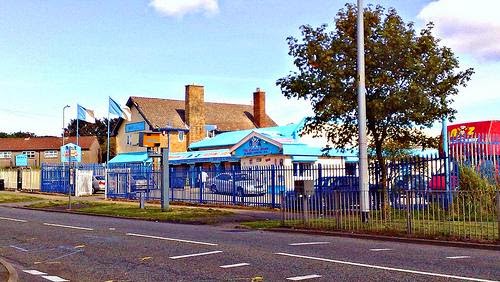The interview allowed me to revisit some ideas that came out of the Acid Flashes event at Idea Generation, conceived, written and directed by Evie Salmon.
 |
| JR live at Acid Flashes / Idea Generation |
As I discussed with George, I see this aspect of rave culture as signalling a point of departure from some of the general paradigms applied to the mid-to late sixties psychedelic scene. Although 'getting high' was something of a given in each case, I see the spatial co-ordinates of rave as being rather more horizontal as opposed to the verticality of Leary's vision of psychedelia. That's to say, rather than advocating an (essentially untenable) elevation beyond normative boundaries, rave culture occupied, transformed and re-used the existing infrastructure in pursuit of its ends. The whole notion of a warehouse party highlights that, like the early skater scene of the 1970s, the activity was not about finding an elsewhere but more about re-thinking the function of the post-industrial landscape. Inner space explored via a re-calibration of the alienating work space.
Rave's incarnation in Blackburn and Accrington is particularly interesting in this respect. According to the website Hardcorewillneverdie, this took full flight in April 1989:
Tommy Smith and Tony Creft take over the running of the illegal parties around Blackburn after the original organisers are arrested. With convoys of cars all tuned to 102.5FM the parties quickly grow in size and reputation. Almost every week empty buildings in and around the Blackburn area are descended on by thousands of ravers. Sett End, Bubble Factory, Unit 7, Pump Street and many more abandoned buildings,warehouses and even an old abattoir are used for parties over the coming months.
There's a suggestive psychogeography here in which Bey's notion of the temporary autonomous zone appears to be specifically grafted onto spaces of industry and commerce. "Sett End, Bubble Factory, Unit 7, Pump Street" were factory sites, commercial edgelands and container spaces. Some still are , others have ossified into seemingly 'public' retail centres. Either way, such temporary occupation and radical transformation at the level of purpose offers a model of narco-practice that is different to the philosophical utopianism of Leary's Millbrook. On a more speculative note, Sett End and another Blackburn rave site, Kent Street, were also the sites of long-running weekend flea-markets during much of the 1980s and 1990s.
 |
| Sett End Road, Shadsworth, Blackburn (circa 2000) |
As the stallholders left Sett End's car park on a Saturday afternoon and drove back through Shadsworth, the rave convey would begin to accumulate in the same spot, waiting for directions to the next occupation, be it warehouse or abattoir. I don't see this as an opposition. Instead it seems to me that two homologous economies - both autonomous and independent - used this isolated pub as their base of operations. The fluidity of these activities is a key part of their operations, but there may also be something about the particularity of the sites that also serve to attract such nomadism. Peter Ackroyd talks about certain parts of London (i.e. Clerkenwell) as spaces that maintain their own time zones. When plotting the countercultural map of the north, one might have to account for a similar sense of separation, a distinction borne out of the covert and plural use of certain continually resonant locations.
*
Much of the history of rave in Blackburn, Altham and the North West is covered in Piers Sanderson's documentary High on Hope. Take a look at the film's website for news of screenings and release dates.
No comments:
Post a Comment